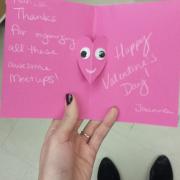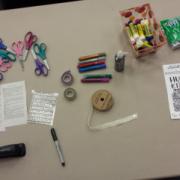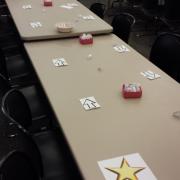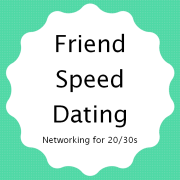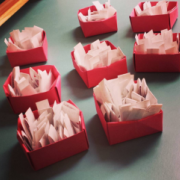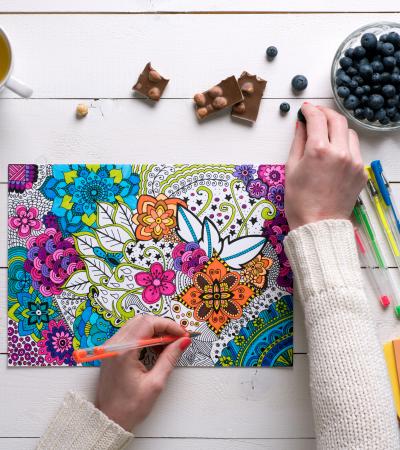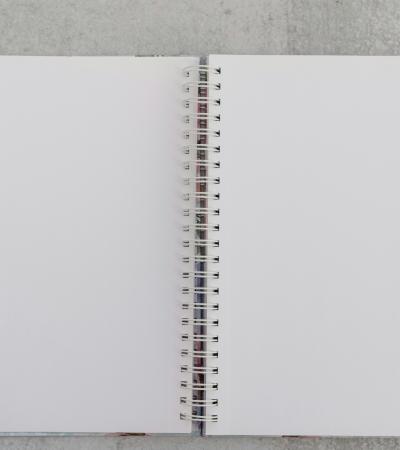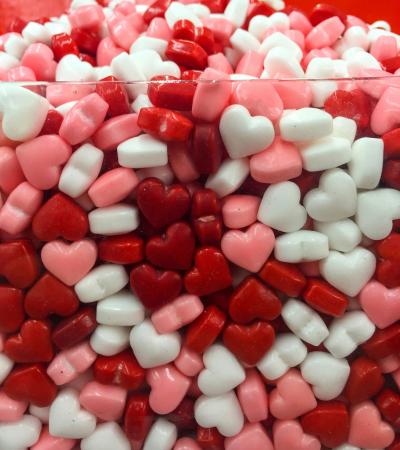Friend Speed Dating is a low-key social event designed to help new adults make new friends. Every attendee spends two minutes talking with each of the other attendees; the "matching" period is followed by time for coffee and a casual activity, like card-making. This event was part of our ongoing program series aimed towards the 20s and 30s crowd.
Advanced Planning
I decided to run this program as part of our It's On series for new adults because I regularly hear from 20- and 30-somethings in the area that they have trouble meeting new friends after they leave university. The goal was to provide a low-stress, fun environment for them to meet new friends, and to draw new patrons in their 20s and 30s to the library.
In heterosexual romantic speed dating, the men sit on one side of the table and never move, while the women shift over one seat each time (or vice versa). But in that scenario, each person only matches with half of the attendees. I needed everyone to match with each other, regardless of gender!
I solved this problem by having one person sit in the same seat for the entire process, while everyone else shifted one seat over. Place a gold star marker at one seat and arrows in front of every other seat to show participants where to move.
I prepared for an odd number of attendees by creating one trio match station. I identified the trio spots by placing little stars at three seats. Everyone still moved over one seat each round like usual, but occasionally found themselves in a trio.
Marketing
I designed a square image with the title of the program using the free graphic design website Canva.com. We shared that image and a link to the program calendar on the library's social media (Facebook, Twitter, blog). However, the majority of the attendees said they found out about our program from our post on Meetup.com.
Budgeting
The program cost us approximately $25 for card-making supplies and coffee cups. You could cut costs by removing coffee or by using existing children's programming supplies for the card-making station.
For the card-making station, I purchased everything from a dollar store: cardstock, glitter glue, stick-on rhinestones and pearls, googly eyes, decorative tape and lace ribbon.
Day-of-event Activity
I and one other staff member spent one hour setting up the program. Set-up entailed:
- two long rows of rectangular tables with nine chairs on either side to create seating for up to 36 attendees; participants were matched with the person sitting across from them;
- little origami boxes filled with fun icebreaking questions spread on the tables; for example: which sport is the worst? Which planet would you most like to rule? What was your childhood dream job? (View more icebreakers under Attachments at right.);
- bowls of pink and white mints on the tables;
- projector at the front of the room with a two-minute timer video;
- nametag stickers and markers by the door;
- coffee and tea set up at the side;
- card-making materials placed on tables at the back;
- arrows at each spot indicating where each participant would move next after the two-minute round; and
- a gold star at one spot to mark which participant would not move at all; this is to ensure that everyone matches with everyone.
Program Execution
The program started at 2 p.m. For the first 20 minutes, attendees trickled in, hung up their coats and filled out nametags. The room was full of nervous energy as people chatted and shook hands.
At 2:20 p.m., I got everyone's attention and asked them to pick a seat with an arrow in front of it. I explained how the "matching" portion would work: the guy with the "gold star seat" would not be moving, and everyone else would be moving over one seat after two minutes, when the buzzer sounds. I asked if anyone had any questions, and then matching mania ensued! The matching lasted from 2:25 to 3:30 p.m.
After the matching portion ended, we provided some casual hangout time. I set up a card-making station with the dollar store supplies (cardstock, glue, glitter, etc) along with a couple Valentine's Day Card Inspiration Sheets (and one Anti-Valentine's sheet) and a slideshow of funny Valentine's cards. I had originally planned to play Telephone Pictionary or Mind Readers, in case some people didn't want to make cards, but after one hour of matching, everyone naturally broke into groups and started chatting. I decided that was way better than a game.
The program was a huge, happy success; 29 people in their 20s and 30s attended, several of whom had never been to a library program before. Many of them asked about other programs and library services. Most of them were swapping phone numbers and planning to meet up with each other later.
I achieved my goals of 1) providing a low-stress environment for new adults to meet each other; 2) bringing new patrons into our 20/30s programming series; and 3) promoting other library services to the 20/30s age group.
Advice
The one thing I would do differently is to leave more space between the tables. I put the tables right next to each other to make switching seats as simple as possible, but so many people talking at once proved to be very loud. Leaving some room would save some frustration. For more tips and a detailed timeline of the event, check out my blog post.
Supporting Materials
- Feedback (Coming Soon!)
- Programming Librarian Facebook Group

